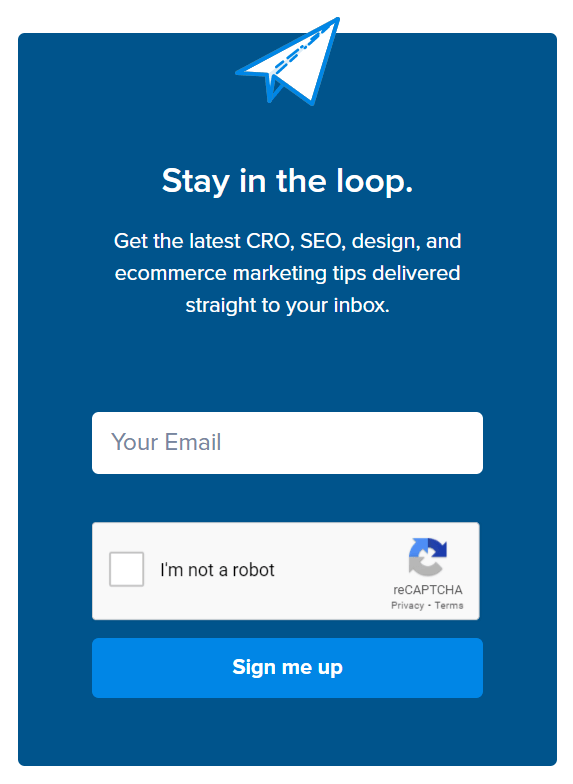When I first got into mobile marketing, I was excited to see how my efforts would translate into improved engagement and sales. I poured my all into creating campaigns, yet the outcomes were frequently disappointing. It wasn’t until I took a step back and recognized my mistakes that I noticed actual growth. In this article, I’ll discuss some of the essential mobile marketing strategy pitfalls to avoid and best practices to implement, based on my own experiences and industry knowledge.
What is Mobile Marketing?
Mobile marketing refers to any promotional activity that promotes products and services on mobile devices such as tablets and smartphones. It uses modern mobile technology characteristics, such as location services, to adapt marketing campaigns to an individual’s location.
Mobile marketing is the use of technology to offer targeted promotions of goods or services to users who are continually connected to a network.
Mobile marketing is no longer optional; it is required. Statista estimates that by 2023, there will be over 6.8 billion smartphone users worldwide. This large audience provides an incredible opportunity, but it also means that competition is tough. Developing an effective mobile marketing strategy is critical for sticking out and reaching your target demographic efficiently.
Key Takeaways
- Ensure your website and content are fully optimized for mobile devices to improve user experience and reduce bounce rates.
- Tailor your mobile marketing efforts based on user behavior and preferences to enhance engagement and conversions.
- Utilize geolocation data to provide personalized offers and drive foot traffic to physical locations.
- Use SMS marketing and push notifications to deliver timely, relevant messages without overwhelming your audience.
- Regularly analyze your mobile marketing data to make informed decisions and continuously improve your strategies.
12 Mobile Marketing Strategy Examples For 2024
#1. Mobile-friendly, responsive website design
Your website, marketing content, and advertisements should all be mobile-friendly. That is a step above simply being ‘mobile friendly’; it entails having a highly responsive website that is specifically intended for mobile use.
A mobile-optimized website provides an excellent consumer experience for individuals surfing on phones and other mobile devices. It also improves conversion rates and reduces bounce rates.
There are various methods for optimizing your website, including employing mobile-specific platforms, HTML5, and ensuring that it is adaptive and responsive. Your content should also be designed with mobile in mind, to be simply digestible, scalable, and loading rapidly.
Check out this short video for a quick overview of what it means to optimize your website for mobile:
While this may be too technical for some, some fantastic mobile marketing organizations provide all you need, including mobile web development and design, as well as creative content production.
#2. Mobile-friendly content and copywriting
As previously said, mobile optimization is not restricted to your website infrastructure. Using mobile-friendly content is very vital!
Here are some ideas to make your material mobile-friendly:
- Use high-quality photos, videos, and GIFs. Mobile content should be visually appealing and compelling.
- The copy should be short, simple, and to the point. For any text that may be skimmed, use short sentences, paragraphs separated by headings and sub-headings, and organized and unordered lists.
- Use large fonts (14px or more), as small fonts are difficult to read on a small screen.
- Add alt text, image names, and captions to every media so that visitors can see what it is if it takes a long time to download over a slow internet connection or if their browser does not instantly load media.
- Most people view videos on silent, therefore subtitles are vital for getting your message across even with the sound turned off!
#3. Opt-In and Opt-Out Forms
In digital marketing, particularly email marketing, it is best practice to obtain recipients’ permission and ensure that they have an opt-out option. Mobile marketing is no different!
Opt-in forms on your website, emails, and other forms of communication give you permission to contact individuals while also helping you develop your email and SMS lists.
You can use a basic pop-up or something more elaborate, such as a lead-generating offer that includes a free resource download in exchange for an email address or phone number.
Similarly, providing an opt-out option is crucial. If someone knows they can opt-out, they are more inclined to provide you with their contact information. They’re also more likely to unsubscribe from your email or SMS lists, saving you from having to do it for them when they stop responding.

Regularly cleansed contact lists have greater open rates and CTR, which improves email reputation and deliverability.
#4. SMS/Text Message Marketing
When it comes to mobile marketing initiatives, SMS marketing, and text blasts are quite efficient. They’re really affordable, and SMS has nearly a 100% open rate!
Text messages are ideal for conveying time-sensitive offers and creating a sense of urgency.
According to Tatango, 90% of marketing text messages are opened within three minutes, and 99% within the first twenty minutes.
To maximize the effectiveness of your text/SMS marketing, add opt-ins and opt-outs, as well as coupons – digital coupons, such as a discount code or a link to an exclusive offer, are more commonly used than coupons from any other marketing channel.
#5. Paid Social Media Ads
Social media marketing has become a dominant marketing channel, and it is ideal for mobile marketing, with 76% of people accessing social media via mobile devices.
Include social media ads in your social and mobile marketing strategies, and conduct A/B tests to evaluate which platforms work best for your company.
Ads are an easy method to reach particular parts of your audience with highly relevant offerings. They are also helpful in increasing brand awareness and gaining followers for your social media sites.
#6. GIF and Video Content
Mobile marketing methods perform better when combined with interactive visual content such as GIFs and videos. People want mobile content to be digestible and enjoyable. Nobody wants to read page after page of material on a small screen!
Video marketing has become a staple of practically every type of digital marketing, particularly on social media.
Videos are particularly beneficial for product reviews and educational content on services. Almost 75% of individuals would rather watch a video than read a handbook when learning about a new product.
Incorporating video and GIFs into your mobile marketing and social media strategy boosts engagement, keeps people’s attention for longer, and makes your content more memorable. It also makes it easier to absorb and more enjoyable for your audience.
#7. Location-based Marketing Techniques
Location-based marketing tactics, such as mobile targeting, geofencing, and geotargeting, are extremely effective mobile marketing solutions.
Check out this brief video by John Arnott for more on the fundamentals of geofencing and other location-based marketing methods.
Leveraging real-time location data provides insights into client behavior and preferences, allowing you to fine-tune your targeting and create highly personalized offers.
Location-specific search results enable brick-and-mortar companies and app-based enterprises to reach consumers nearby and maximize convenience.
Brands that give location-based deals, such as free delivery within a certain area, or products that require immediate delivery, such as food, will gain from mobile marketing in e-commerce.
#8. Optimize Your Voice Search
In addition to voice searches on mobile phones, it is expected that by 2022, more than half of houses will have a voice smart speaker, a trend that is rapidly growing.
This is significant for marketing since, according to Invoca, 43% of individuals who own voice-enabled devices use them to shop. Of those, 51% use voice search to investigate products, 22% make direct purchases, and 17% reorder items.
People also use voice search to find recommendations for specific destinations, such as restaurants, stores, and services. Most voice searches result in a phone call to the business they identified, as well as online and in-store visits, indicating that voice search is a key driver of actual purchases rather than traffic.
#9. In-app Support To Improve the Customer Experience
Customer experience is everything. Providing excellent customer service, support, and an easy way to do business with you can boost client retention, generate repeat transactions, and raise customer lifetime value.
It will also boost the likelihood that customers will refer their friends and family to you, advocate for you online, and share their positive experiences with your business on social media.
A lot goes into providing a great customer experience, but with mobile marketing tactics, you can employ in-app messaging and assistance to improve each client’s experience even more.
In-app support via live chat on your website or in your company’s mobile app is a quick and easy way to engage with clients. The easier it is for people to reach you and receive a prompt response and simple solution to their difficulties, the better!
#10. Push Notifications
Push notifications are an excellent way for businesses with mobile apps to provide notifications and time-sensitive offers while also keeping consumers up to date on the newest promotions. When users enable push notifications, they will appear on their home screen rather than just within the app.
Push notifications are also effective for cart abandonment and re-engagement messages. To make the most of your push notifications, use simple features such as buttons and fast links, and keep messaging short, entertaining, and engaging by including emojis and other visual elements.
#11. In-App Messaging
Unlike push notifications, users do not need to agree to receive messages in your app’s message inbox. This implies that these messages will be delivered automatically to all users, and you can use them for automated communications such as onboarding, preference setup, marketing promotions, and upselling extra items or features.
#12. Personalized Mobile Marketing Campaigns
Personalization is essential in digital marketing, particularly for email and mobile marketing. In fact, 75% of customers are more likely to buy from a store that recognizes their name and provides recommendations based on their past purchases.
One of the most appealing aspects of mobile marketing is the ability to be highly personalized and precisely targeted.
Mobile user data can help you build highly tailored offers by combining location data, interaction/purchase history, and some basic demographic information that is easy to collect when individuals opt into mobile marketing channels.
Common Mobile Marketing Strategy Mistakes to Avoid

#1. Ignoring Mobile Optimization
One of the most serious blunders is failing to optimize material for mobile devices. In today’s digital age, the vast majority of consumers visit websites using their cell phones. According to Google, 61% of visitors are unlikely to return to a mobile site they were unable to access, while 40% will visit a competitor’s site instead.
I previously launched a campaign without fully testing the mobile version of my website. The website loaded slowly and the layout was broken. This carelessness resulted in a large number of potential consumers leaving my site.
#2. Overlooking the User Experience (UX)
A seamless user experience is essential. Poor navigation, crowded designs, and invasive advertisements can annoy and drive customers away. Making sure your app or mobile site is user-friendly can drastically boost engagement and conversions.
One of my early projects featured a sophisticated navigation menu. Users struggled to find what they were looking for, resulting in low retention rates. User involvement increased significantly as the design was simplified and the UX improved.
#3. Failing to Personalize Content
Generic messages frequently fall flat. Personalization is crucial for making users feel valued and understood. Tailoring information and offers based on user behavior and preferences might help increase engagement.
After introducing tailored push notifications based on user behavior, I noticed a 20% increase in open rates and a 15% increase in conversions.
#4. Neglecting Data and Analytics
Not using data to inform your mobile marketing strategy can result in missed opportunities. Analytics provide information about user behavior, marketing performance, and areas for development.
Initially, I did not closely monitor my marketing stats. By integrating technologies such as Google Analytics and Mixpanel, I was able to better analyze user behavior and make data-driven decisions that increased my ROI.
#5. Overloading users with notifications
While push notifications might be beneficial, using them excessively can cause user frustration and increased app uninstalls. It’s critical to strike the correct balance and deliver value with each notification.
Excessive alerts in a client’s app led to a high uninstallation rate. Reducing frequency and focusing on valuable, relevant updates increased retention rates.
Examples Of Mobile Marketing Strategy
#1. Samsung
Samsung collaborated with Indian tech company InMobi to create interactive advertisements for the Galaxy S6 phone. These advertisements generated a personalized real-time battery identification mobile ad unit that offered a product and service to a consumer with a demo on their phone when their battery was running low. The mobile advertisement highlighted the new phone’s “super fast charging capability” when its battery was low, tempting people to switch to the new phone.
#2. Pond’s
Pond’s is another brand that has worked with InMobi. They developed an interactive commercial for one of their acne products in which when a customer looked at their phone, the camera captured their features and highlighted acne-prone areas. The advertisement did not ask the user to download any software or visit any other website.3
#3. Ruffles
Ruffles saw dwindling sales in Brazil and sought to target teenagers with interactive advertisements. It produced the mobile reality game AmiGo. The users saw what the game showed them, whereas their friends saw what the user’s camera displayed. Friends would see Ruffle chips surrounding the person and may provide voice commands to their friends about where to take the chips. The more chips collected, the more points the user will receive. Ruffles ranked the users with the greatest scores on its social media accounts.
#4. Nissan
Nissan devised the “Evil Snowmen” ad for its Rogue SUV, which featured a video of the SUV fighting a gang of snowmen. The advertisement also included hotspots on the screen where users may tap to learn more about the SUV’s attributes. Other sites also offered weather and snow safety tips.
Best Practices in Mobile Marketing Strategy
#1. Optimize for speed and performance
Make sure that your mobile website and app load promptly. According to Google, when page load time grows from 1 to 5 seconds, the likelihood of a bounce increases by 90%.
To assess and improve the load time of your website, use tools such as Google PageSpeed Insights.
#2. Focus on Responsive Design.
A responsive design guarantees that your website looks and works properly across all devices. This strategy improves both the user experience and SEO rankings.
Test your website across a variety of devices and screen sizes to ensure a consistent user experience.
#3. Utilize location-based marketing.
Use geolocation to provide personalized information and offers. Location-based marketing can greatly increase engagement and foot traffic in real stores.
A retail client employed geofencing to send customized discounts to people near their locations, which resulted in a 25% increase in in-store traffic.
#4. Invest in mobile SEO
Optimize your mobile content for search engines. Mobile SEO entails optimizing site speed, employing mobile-friendly design, and ensuring that content is legible on tiny displays.
Focus on mobile-first indexing and use AMP (Accelerated Mobile Pages) to improve mobile performance.
#5. Incorporate Social Media
Social media channels are crucial for mobile marketing. Engaging content on sites such as Instagram, Facebook, and TikTok can help increase traffic and conversions.
Running a mobile-friendly Instagram ad campaign with captivating pictures and a clear call-to-action increased one of my clients’ website visits by 30%.
Benefits of Mobile Marketing Strategy
#1. Mobile clicks save money
Mobile marketing is cost-effective in a variety of ways.
When dealing with organic growth channels, just rework your existing content to better suit mobile customers.
In the case of paid growth channels, running SMS, social media, or in-app ads for mobile is less expensive than running traditional desktop, TV, or print ads, making mobile marketing ideal for small firms.
Not to mention, using a mobile digital marketing strategy allows you to run highly targeted and location-based ads, reducing waste and increasing ROI.
#2. Mobile user experience influences purchasing decisions
Nowadays, more users anticipate smooth interactions with mobile devices as part of the customer experience.
According to statistics, customers are 62% less inclined to purchase from a brand following a terrible mobile experience.
In 2021, mobile devices accounted for approximately 72.9% of retail eCommerce transactions.
People want to interact with companies via mobile, and their experiences with such interactions influence their purchasing decisions.
As a result, establishing pleasant user experiences by making it simple for users to discover your brand, make purchases, and obtain help on their mobile devices boosts your chances of winning and maintaining more customers.
#3. Mobile marketing is a unique marketing channel
No other digital marketing channel provides the level of accessibility that mobile marketing does.
The global mobile usage in 2021 was 3.8 trillion hours, therefore having a mobile marketing strategy allows you to reach your target instantaneously.
Furthermore, mobile marketing allows your marketing strategy to include newer and more innovative initiatives that are likely to be more impactful.
#4. Mobile marketing is very individualized
Mobile marketing allows you to use personalization in new ways.
For example, location-based marketing can provide individuals with relevant mobile information based on their current location in real time.
Furthermore, by monitoring your customers’ in-app behavior, you may provide personalized in-app content such as recommendations, and off-app experiences such as push alerts and emails.
This will put you in your target audience’s good books, as 71% of customers want organizations to provide individualized experiences, and 76% are upset when this does not occur.
Conclusion
Avoiding common pitfalls and applying recommended practices can greatly improve your mobile marketing efforts. Every phase, from performance optimization to data and personalization, can significantly impact your campaign’s effectiveness. Are you ready to take your mobile marketing strategy to the next level, increasing engagement and conversions?
Related Articles
- Level Up Your Marketing Strategy With Hyper-personalization
- PR for Startups: PR Hacks Every Startup Must Try (Pro Guide)
- What is Exactly Cause-Related Marketing? (+ Practical Examples)
- Advertising vs. Marketing: Which Should Your Business Focus On More?
- 10 Most Resounding Influencer Marketing Fails in History (Lessons to Learn)






